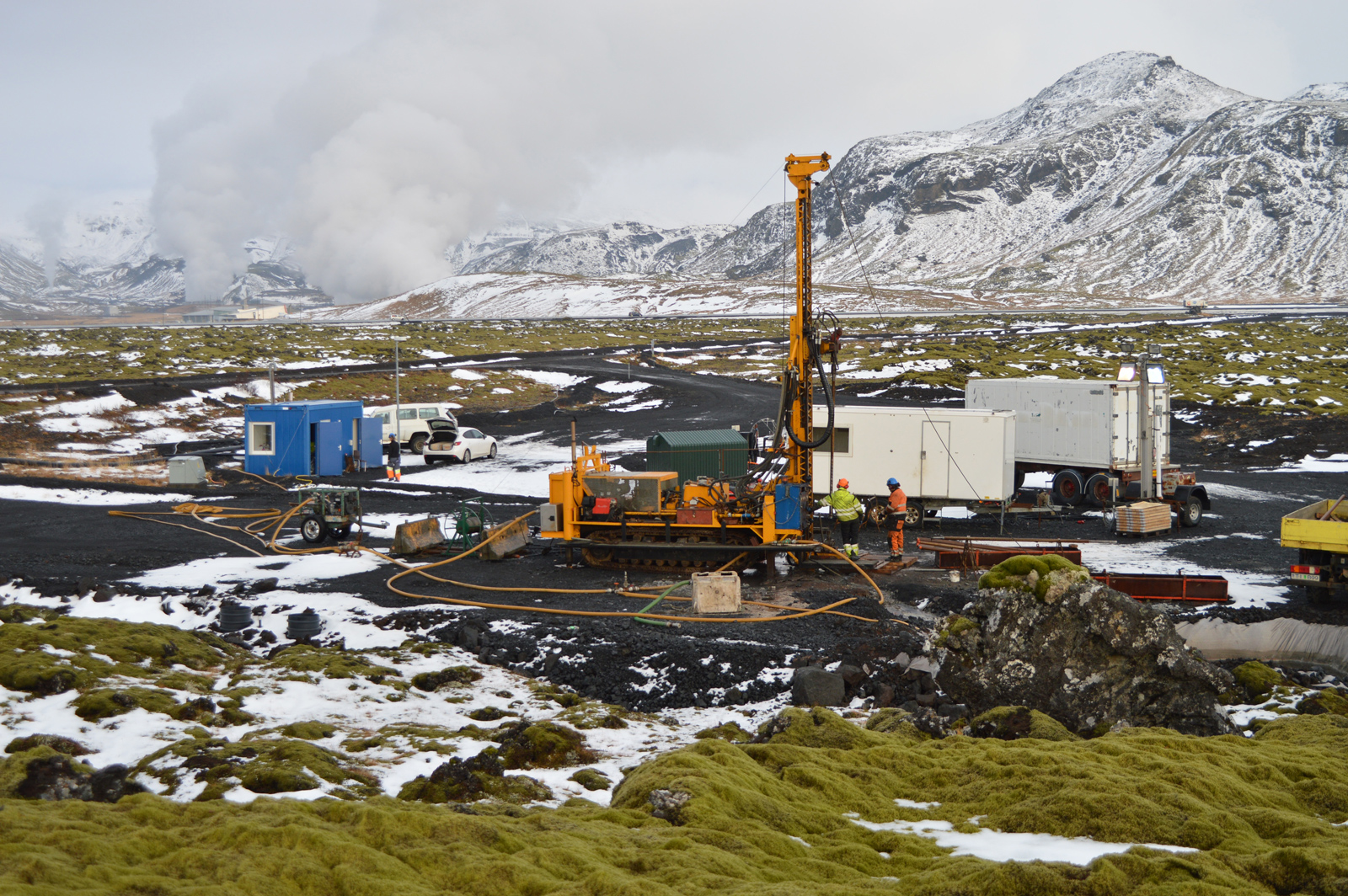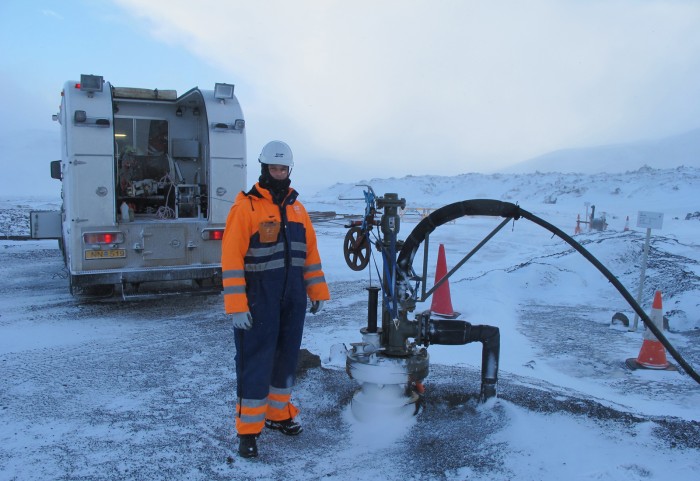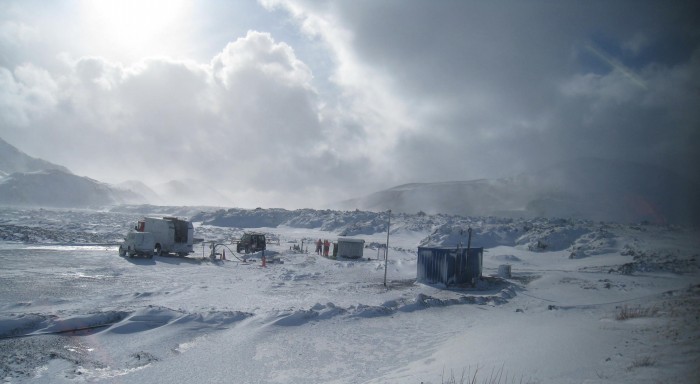A Power Plant in Iceland Deals with Carbon Dioxide by Turning It into Rock

The world has a carbon dioxide problem. And while there are lots of ideas on how to curtail the nearly 40 billion tons of the gas that humanity spews into the atmosphere annually, one has just gotten a boost: burying it.
Since 2012, Reykjavík Energy’s CarbFix project in Iceland has been injecting carbon dioxide underground in a way that converts it into rock so that it can’t escape. This kind of carbon sequestration has been tried before, but as researchers working on the project report today in the journal Science, the process of mineralizing the carbon dioxide happens far more quickly than expected, confirming previous reports and brightening the prospects for scaling up this technology.
Iceland’s volcanic landscape is replete with basalt. Injecting carbon dioxide and water deep underground allows the mixture to react with calcium, magnesium, and iron in the basalt, turning it into carbonate minerals like limestone.

Conventional methods for storing carbon dioxide underground pressurize and heat it to form a supercritical fluid, giving it the properties of both a liquid and a gas. While making the carbon dioxide easier to inject into the ground—usually in an old oil or gas reservoir—this carries a higher risk that it could escape back into the atmosphere through cracks in the rock.
CarbFix takes carbon dioxide from the Hellisheidi geothermal power plant, the largest in the world, which uses volcanically heated water to power turbines. The process produces 40,000 tons of carbon dioxide a year, as well as hydrogen sulfide, both of which are naturally present in the water.

The new study shows that more than 95 percent of the injected material turned to rock in less than two years. “No one actually expected it to be this quick,” says Edda Aradóttir, CarbFix’s project manager. The project is already storing 5,000 tons underground per year, making it the largest of its kind. New equipment being installed this summer aims to double the rate of storage.
Aradóttir says CarbFix spends $30 per ton to capture and inject the carbon dioxide, versus $65 to $100 per ton for the conventional method. A lot of that savings comes from not having to purify the carbon dioxide; it and the hydrogen sulfide are simply mixed with additional water and injected underground.

The project has received some criticism for its heavy water usage—25 tons of water per ton of carbon dioxide—but Aradóttir says that shouldn’t be an issue, as using saltwater is fine. And since basaltic rock is found on 10 percent of continental land and all across the ocean floor, there is more than enough room for this technology to expand.
Bradford Hager, a professor of earth sciences at MIT who was not involved in the study, says this method is a better alternative to supercritical fluids, but the scale of this demonstration is tiny. He also says the study worked so well because the basalts in Iceland are highly weathered. Other basalts may not mineralize carbon dioxide as rapidly. “I am encouraged that it can work, but it is an overstatement to say it could be used across the ocean floors,” he says.
Juerg Matter at the University of Southampton in the U.K. led the research effort. He says that the project could feasibly be scaled up, but that’s not really up to scientists. Lower costs aren’t necessarily enough to spur energy companies to adopt carbon capture and storage technologies unless there is an additional economic incentive in place, like a carbon tax. Matter says that framework is missing. “Policy makers need to come up with a global incentive, because one country is not going to solve this on their own,” he says.
Keep Reading
Most Popular
Large language models can do jaw-dropping things. But nobody knows exactly why.
And that's a problem. Figuring it out is one of the biggest scientific puzzles of our time and a crucial step towards controlling more powerful future models.
The problem with plug-in hybrids? Their drivers.
Plug-in hybrids are often sold as a transition to EVs, but new data from Europe shows we’re still underestimating the emissions they produce.
Google DeepMind’s new generative model makes Super Mario–like games from scratch
Genie learns how to control games by watching hours and hours of video. It could help train next-gen robots too.
How scientists traced a mysterious covid case back to six toilets
When wastewater surveillance turns into a hunt for a single infected individual, the ethics get tricky.
Stay connected
Get the latest updates from
MIT Technology Review
Discover special offers, top stories, upcoming events, and more.